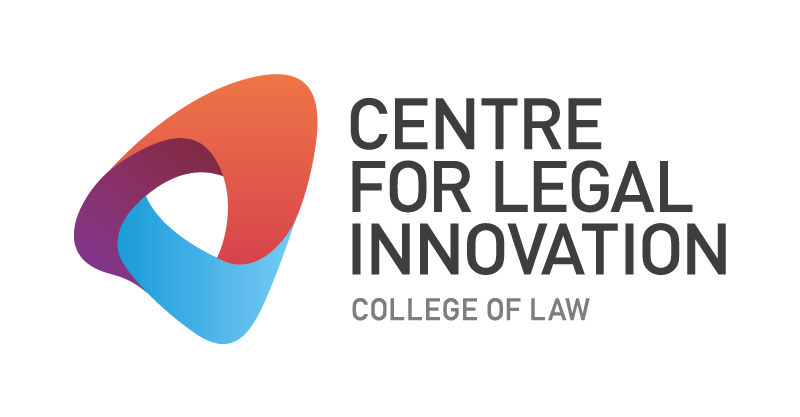Law firms are facing an increasingly competitive market, particularly mid and top-tier firms. Further, digital disruption – in the form of online lawyers, on-demand lawyers/lawyers-by-subscription and ‘robot’ lawyers – is changing the way clients see legal services, both in terms of cost and value. Lisa Leong, CEO of Ohten APAC, and Tristan Forrester, Chief Strategy Officer of Ohten APAC, have developed a fresh approach to legal services and client partnering, ensuring the work lawyers do align with what businesses need. Insights spoke to Lisa and Tristan ahead of their August presentation at the College’s CLI Breakfast Series on Demystifying Legal Innovation through Design Thinking.
Their success comes down to asking a crucially different question of lawyers and clients: how might we re-imagine how legal is provided to your business? It is an approach that has led to undeniable success – a saving of 40,000 lawyer hours as part of a collaboration between Herbert Smith Freehills and Telstra Legal. The collaboration, which won a number of innovation awards, including the global ACC Value Champion Award 2017, involved running ‘design thinking workshops’ and ‘innovation sprints’ to spur productivity.
“It all started because we had clients asking us very similar questions,” said Lisa. “We’re under a lot of pressure in terms of cost and budget. Do you have any innovative pricing, cost reduction or value creation initiatives?”
The key was to shift the question away from cost and pricing to what value lawyers – in-house and external legal teams – provided to their clients.
“You need to do more than just tweak, or look at pricing in isolation. You need to consider how legal is provided to the business. Business has specific objectives, and legal needs to specific align to those objectives,” said Tristan.
Essential to their design-thinking approach was a holistic, helicopter view of the client experience - understanding the different needs of different clients and creating an improved legal service tailored to those needs.
“It’s also about being human-centred,” said Tristan. “Clients are human beings, and we need to treat clients as human beings, rather than as recipients of a legal service. How do we make them feel? We need to empathise with the individual end user of legal services, and understand what they’re looking for as a person.”
“When we started looking at the application of design thinking, we recognised that the way in which we are conditioned as lawyers is quite different from the design thinking mindset,” Lisa said. “It’s not to say a lawyer’s mindset is a negative; it’s extremely useful when you’re being a lawyer. It might be less useful when you’re trying to think creatively about a solution to a really difficult problem. So a lot of our work focuses on mindset.
“In the Telstra Innovation Forum, we started by being very clear about what was in it for the team. For example, how could we reduce the amount of low risk, low value work that we do? Reducing boring work was definitely motivating! As a legal team, it would also make them more valuable to the business.”
As part of this process, lawyers were encouraged to generate ideas to reduce low risk, low value work. The top four ideas would be assigned to small teams of four or five.
“There’s plenty of research supporting the fact that smaller teams work more effectively than larger teams,” noted Tristan.
Once a team had tackled an idea and developed a solution, a plan of action would be made with responsibilities assigned around the core work hours of each team member.
“We were very simple in the way we planned action,” said Tristan. “On a whiteboard, we plan the next six to eight weeks. You don’t have to plan everything. Just start, and plan the next step. This is an innovation sprint.
“From there, we built in a process for accountability. Halfway through the sprint, we ask, ‘how are you going as a group? What have you done? What do you need help with? What have been the successes and importantly, the failures?’ We spent a lot of our time normalising failure,” said Tristan.
Normalising failure was crucial, noted Lisa. “We did activities around how it feels to make a mistake, and repeated them quite a bit.”
“It’s particularly uncomfortable for lawyers,” added Tristan. “Failure is an essential process of organisational change, which is really what we are doing. You are going to fail more than you succeed. So let’s actually plan for that failure. Let’s learn from it, because it’s going to happen. How can we get comfortable with failure?”
Once the sprint was complete, teams would perform a ‘retrospective’ – a review of what was learned, what changes need to be made, what to avoid and what to build.
“It becomes an iterative process,” said Tristan. “We asked, ‘What do you want to do now? Do you want to continue to work on this idea, do you want to pivot, or do you want to kill it?’”
No doubt this involves a radical rethink to how lawyers approach the law.
“Why would a law firm do this? For us, it was a matter of disrupt or be disrupted,” said Lisa. “We might as well be standing side-by-side with in-house counsel facing disruption rather than wait for a phone call saying our services were no longer required.”
“The market for legal services from mid to large law firms has been declining for 14 of the last 15 quarters. There are already firms investing in this and shifting their approach because of competitive pressures. It’s really a question of which firms are going to move quickly enough to stay relevant and profitable.”
Lisa Leong and Tristan Forrester will be sharing their insights at the next CLI Breakfast Series events to be held on 29 August 2017 in Melbourne, 30 August in Sydney and 31 August in Brisbane. For more information or to register your interest, click here.

